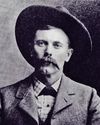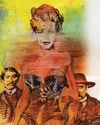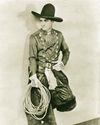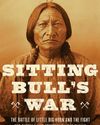Prøve GULL - Gratis
Texas
True West
|April 2023
The Lone Star State celebrates the bicentennial of the Texas Rangers.

Admired by many, denounced by some, the Texas Rangers trace their 200-year history to a 177-word document penned by Texas colonizer Stephen F. Austin on August 5, 1823. In that document, he said he intended to employ 10 men “to act as rangers for the common defense…”
Considered the Ranger “Magna Carta,” the document was written at Sylvanus Castleman’s log cabin about five miles northwest of present La Grange. Castleman’s place served as de facto headquarters for Austin’s fledgling colony and was the birthplace of the Rangers. To learn more about Castleman and his land, visit the Fayette County Heritage Museum and Archives, 855 S. Jefferson St. in La Grange.
Later in 1823, Austin platted a townsite near the Brazos River and named it San Felipe. For 13 years, the village reigned as the capital of his colony and the social, economic and political hub of Anglo settlement in northern Mexico.
As conceived by Austin, paramilitary companies did “range” his colony in the 1820s, but not until 1835 did the ranging concept become formalized in Texas. That happened at San Felipe when a body called the Permanent Council met there to grapple with two critical issues—a dictatorial Mexican government and the threat of hostile Indian tribes.
Daniel Parker offered a resolution on October 17, proposing a three-company, 70-man standing ranger force. By November, a larger group calling itself a “Consultation” further discussed Parker’s idea. On the 24th the body passed an “Ordinance Establishing a Provisional Government.” Article 9 of an appendage labeled “Of the Military” authorized a “corps of rangers.” For the first time the Rangers became an arm of the government.
Denne historien er fra April 2023-utgaven av True West.
Abonner på Magzter GOLD for å få tilgang til tusenvis av kuraterte premiumhistorier og over 9000 magasiner og aviser.
Allerede abonnent? Logg på
FLERE HISTORIER FRA True West

True West
Unlike Father, Unlike Son
Ed Scarborough didn't follow in the footsteps of his famous dad.
2 mins
November - December 2025

True West
BEST DOC EVER
A FITTING TRIBUTE TO VAL KILMER
7 mins
November - December 2025

True West
Rock Around the Block with Doc
What goes around, comes around.
1 min
November - December 2025

True West
Wickenburg Booms Again
The once mining boom town then dude ranch capital, is now a team-roping capital and arts center.
3 mins
November - December 2025
True West
WYATT IN A MOVIE?
MAYBE OR MAYBE NOT
2 mins
November - December 2025

True West
Josephine “Sadie” Earp: Secrets & Lies Revealed
When Josephine “Sadie” Earp (nee Marcus) decided it was time to tell the story of her life in 1937, she had a big problem. Her early life and that of her family were far from ideal, and the way she dealt with such potential embarrassments was to simply wipe them from her story, or invent a more acceptable fictional story to compensate.
11 mins
November - December 2025

True West
Young Chefs of the West
They came to the frontier from around the world and invented dishes still served today.
2 mins
November - December 2025

True West
Cavalcade of Ask the Marshall
Lessons I have learned during more than a quarter century of \"Ask the Marshall\"
3 mins
November - December 2025

True West
There's No Business Like Show Business
Firearms from the stage, screen and expositions are a hit at auction.
2 mins
November - December 2025

True West
A War of Freedom, A War Never Won
Paul Hedren's new biography of Sitting Bull, plus three new biographies on the Earps and Doc Holliday, Jim Bridger, and the legendary boomtown of Deadwood
7 mins
November - December 2025
Translate
Change font size

